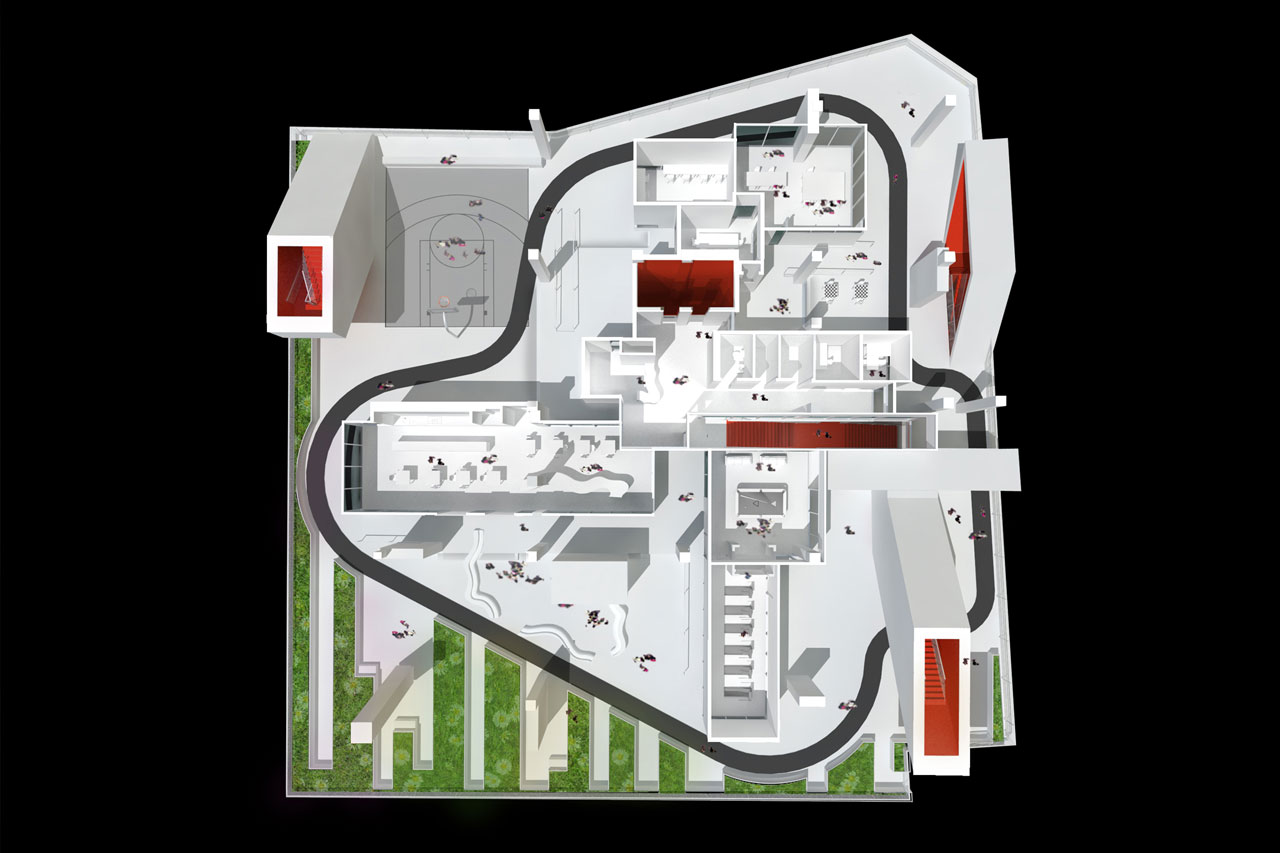MICHAEL MALTZAN /
TRANSPOSITIONS: THOUGHTS ON "TRANSFORMATION"
If adding to an existing context or building is always complex, the act of transformation is an even greater challenge. In adding, complexities result almost solely from the pragmatic concerns that need to be overcome by placing the new, the bigger, the more advanced, next to or within the existing. It is a regime of quantities. It is also a regime of the immediate, and as such requires little reciprocity from the context. The addition lives autonomously astride its host.
In transformation it seems to me, the terms of success insist on a reciprocal effect and a kind of mutual influence to be produced between the original and the interloper. Transformation, (or transposition perhaps more accurately) has the potential for a great resonance that amplifies the original through a design of seemingly invented form, and requires a means of approach which imagines the result in less quantitative terms. Perhaps paradoxically, we are looking to the design to develop its qualities and instincts through such a deep commitment to the inherent characteristics of the existing that the new is ultimately liberated from it. In much of our work we have been preoccupied with producing physical relationships and relational tensions between the existing and the new which can intensify the qualities and characteristics of the existing, while simultaneously allowing the new as well to develop its own fundamental identity. The real work in the design is producing, from what is often a meeting of opposites, a “third thing” which may not ultimately be physical in the way that we recognize its presence and its effect, but which transcends the context in such a compelling way that we can no longer allow ourselves the state of disinterest or denial about the existing which is often the progeny of familiarity.
By thinking about the work in this way we increasingly confront the slippery existence of ‘character’ within the found situation. Arriving at this point, which now seems to us inevitable, has been significant as we try to imagine propelling aspects of the context which, while resistive to easy categorization, are no less tangible, and which enable deeper and more productive means to move the design thinking in a way that challenges what we imagine context to be.
Through these emergent characteristics, often distinguished by a kind of abstraction, we are seeking to produce a new type of attention to the context. This is manifest in our projects through ambulatory movement and vision, as well as intensifications of perspectival space, extensions of allusive geometries, interconnectedness of visual lines, as well as a interwoveness and blurring of programmatic and public space.
Often, some initial drawing or piece of model, or even an image (sometimes seemingly unrelated) arrives as a first step. As a catalyst it begins a process which interprets the existing condition as a form which asks questions beyond its margins. We are conscious that this first step must counteract the problem of insularity in the design process created when working with the found, by knowing too much because of what exists already.
Originally published in Lotus (2004)

